It’s time once again for Gary Groth’s great Fantastic Fanzine,
specifically the Special numbah two!
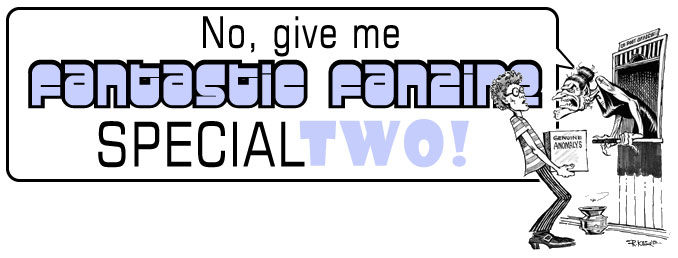 Fantastic Fanzine Special 2: February 1972
Fantastic Fanzine Special 2: February 1972
Editor: Gary Groth, Publisher: Alan Light
Welcome back after Christmas break! I hope gazing at my dorky holiday cards in the last installment of Ink Stains did not put you off too much. We are back in spectacular…no, make that special fashion…with Gary Groth’s second special issue of Fantastic Fanzine (and a special wraparound Dave Cockrum cover, seen above).
Regular readers know that Gary Groth started at a very young age learning the ropes of publishing with this wonderful fanzine. He later became the guiding light behind probably the best regular comics magazine ever, The Comics Journal (and Fantagraphics). Gary told me via email about the gap between FF and TCJ, saying, “The first Journal came out in the summer of ’76, so that’s a little over five years. During that sordid period, I dropped out of college, put on a rock ‘n’ roll convention (’75), started publishing a rock ‘zine called Sounds Fine, started a mail order underground comix business that lasted a few years, published a monthly comics newsletter, and was employed just enough of the time to keep a roof over my head and pancakes on the table.” He also mentioned that he published Word Balloons when he was in the first year of college, along with a few other small ‘zines. As much as any fanzine editor of the time, he built an amazing stable of artists and writers, many of which went on to become stars and stalwarts of the comics and animation industries. This issue, the FF special number two, has a wide variety of features, so let’s dive in!
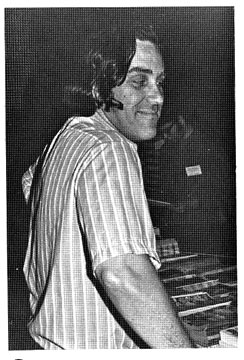 Conventions play a major part of this issue, specifically the 4th annual New York comic convention. This, the first major comic con, was started by Phil Seuling, so it is appropriate that in addition to covering the convention very thoroughly, this issue features an interview with Seuling himself, seen at left. If it wasn’t for Seuling, we would probably not have comic conventions like we do today. Other convention articles include coverage of the opening address by James Warren (Warren publications), the Warren Awards panel, the film schedule, the Goethe Awards, a Harvey Kurtzman talk, a Kirk Alyn (Superman) panel, the awards luncheon (talks by Gardner Fox and Jim Steranko), a Steranko presentation, an EC comics panel, a Frederick Wertham (Seduction of the Innocent, an early indictment of comics in general and EC comics in particular) panel, a Spirit slideshow, and the Masquerade competition, featuring none other than the winner, Mike Zeck as Black Bolt! Mike has some photos on his Facebook page here (in addition to his own photos from this very same convention). You can see his triumphant accepting of first place below.
Conventions play a major part of this issue, specifically the 4th annual New York comic convention. This, the first major comic con, was started by Phil Seuling, so it is appropriate that in addition to covering the convention very thoroughly, this issue features an interview with Seuling himself, seen at left. If it wasn’t for Seuling, we would probably not have comic conventions like we do today. Other convention articles include coverage of the opening address by James Warren (Warren publications), the Warren Awards panel, the film schedule, the Goethe Awards, a Harvey Kurtzman talk, a Kirk Alyn (Superman) panel, the awards luncheon (talks by Gardner Fox and Jim Steranko), a Steranko presentation, an EC comics panel, a Frederick Wertham (Seduction of the Innocent, an early indictment of comics in general and EC comics in particular) panel, a Spirit slideshow, and the Masquerade competition, featuring none other than the winner, Mike Zeck as Black Bolt! Mike has some photos on his Facebook page here (in addition to his own photos from this very same convention). You can see his triumphant accepting of first place below.
Now, is that cool or what? Convention coverage was done by Groth, Jeffrey Wasserman, Bob Zimmerman, Carter Scholz, Mike Catron, Alan Brennert, Carl Gafford, Paul Levitz (Yup, that Paul Levitz!), Martin Pasko, Bill Cantey, and Bill Wilson (The Collector). You should recognize several names from that list alone! Below you see one more convention pic, a group of various professionals attending. Top row is (left to right) Denny O’Neil, Marie Severin, Gil Kane/Len Wein; second row is Roy Thomas, Bill Gaines (EC, Mad), Sergio Aragones; next row is Gil Kane, Wein/Thomas/Kane; and last row is Wein and a triple shot of Neal Adams (of course!). Again, you can see more and better quality pics on Mike Zeck’s Facebook page (in his folder on this con).
Other articles include a funny and personable So, You’re David Berg? by Bernie Bubnis (David Berg of Mad Magazine), “Pray for Simon Savage” (by Hank Rosenfeld, covering Capt. Savage and his Leatherneck Raiders), the editorial, the letters column, and a …past…artistic triumphs, from which the John Fantucchio Spider-Man, and bold Kirby-like Barry Smith illustrations below were gleaned from (among other articles covered later).
Jan Strnad and Robert Kline contribute a funny article on the perils of fanzine publishing in the middle of the Kansas plains, complete with a western theme provided by Kline. You will see one of his illustrations at the very top of the page as part of the banner. More Kline later! Bill Cantey gives us some Star Trek fan fiction in The Hole in the Universe, illustrated by Bill Marchesano and Dave Cockrum (seen below), with a typically beautiful Kenneth Smith logo.
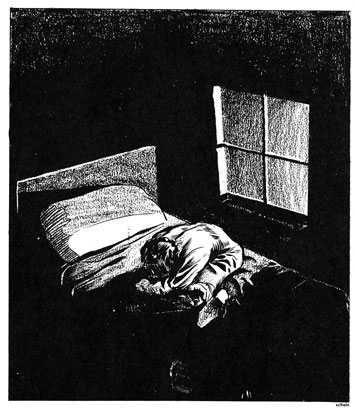 Dave Cockrum also appears in several spots in this issue, being a Fantastic Fanzine regular. Another bit of fiction comes to us via Jim Wilson in The Anderson Incident. This is interesting in the fact that the characters are actual fanzine editors and writers, including Groth himself, as well as Carter Scholz, Bill Cantey, Wasserman, and others. It is quite a well written and sometimes harrowing story about a young but incredibly talented writer being forced into a stay in an authoritarian boarding school which breaks his talent, his drive, and eventually his will to live. Heavy for a fanzine, and well done. It is illustrated in a smartly minimalistic manner by Scholz and Robert Hugel, one illo seen at left by Scholz.
Dave Cockrum also appears in several spots in this issue, being a Fantastic Fanzine regular. Another bit of fiction comes to us via Jim Wilson in The Anderson Incident. This is interesting in the fact that the characters are actual fanzine editors and writers, including Groth himself, as well as Carter Scholz, Bill Cantey, Wasserman, and others. It is quite a well written and sometimes harrowing story about a young but incredibly talented writer being forced into a stay in an authoritarian boarding school which breaks his talent, his drive, and eventually his will to live. Heavy for a fanzine, and well done. It is illustrated in a smartly minimalistic manner by Scholz and Robert Hugel, one illo seen at left by Scholz.
Tony Isabella, usually a regular writer for FF, is only seen in photos from the convention. There is a cryptic line by Groth saying that Isabella would not be writing for the ‘zine anymore because of an incident of some sort. 40 years later, Groth reveals more by saying:
This is a good opportunity to give Isabella a long overdue apology (if I haven’t done this already). What happened was this: Isabella was covering The Warren Awards for the convention report. His piece was highly critical of Warren, such criticism falling squarely within the editorial purview of his assignment. For reasons mercifully forgotten, Jim Steranko disliked Isabella intensely. During one of our phone conversations I must’ve mentioned to Jim that I had a highly critical piece by Isabella about Warren and the Warren Awards, which prompted Steranko to advise me to a) not run it and b) send a copy of Isabella’s manuscript to Warren. Now, Steranko was someone I worshipped at the time and he could be persuasive, at least to me. I remember feeling enough pangs of conscience about this that I called him up several times and asked him once again if he thought this was the right thing to do and asked him to repeat his rationale, which he did. It all sounded reasonable when I was talking to him, but five minutes after getting off the phone, something bugged me about it. Nonetheless, I did. Warren sent me an appreciative letter thanking me, and I regret that I did it to this day. It really was a terrible betrayal on my part. I don’t remember anything specific about the fall-out between me and Tony, but he must’ve been pissed, and for good reason. I should hope that, in retrospect, Jim should feel as badly as I do about it.
Below you see a piece by the Hawaiian artist Dennis Fujutake, a favorite of mine. He does a few more pieces in this issue, as well. I always loved his Jeff Jones-like style. He went on to create Dalgoda (you can see a career checklist here), and has done a large amount of comics work.
There are a couple of great interviews this issue, the first of which is conducted by Gary Groth, with the subject being John Adkins Richardson. Richardson contributed various illustrations to fanzines during this time, but stood out as more of an editorial illustrator/fine artist. He was also a college art professor, and it is a hoot to read the back and forth between the young smart ass Groth, and the academic but still hip Richardson. Something that surprised me about this interview is mentioned in the next to last line in Groth’s quote below.
I was 17. John was 43, I think. We corresponded a lot, and I published him in the fanzine. I never met him, and I’m not sure I ever spoke to him, but I felt close to him, in a student-mentor kind of relationship. I liked him very much and I think he enjoyed working with this precocious kid. John was a professor of art and design at Southern Illinois U and certainly the smartest guy up to that time to take an interest in comics. A real anomaly. Unknown until now is that John wrote the whole interview himself, using or extrapolating from quotes from my letters to him over the previous couple of years. He basically captured my fan boyish ignorance and played off it nicely with his professorial erudition.
Because of Richardson’s background, many subjects not usually covered in comic fanzines see the light, such as Roy Litchenstein (whom Groth derides), the insanity of trying to make a living as a comic book artist, the merits of Frazetta vs. Picasso, and the difficulties of drawing a hand, among many other fun and informative topics.
The second interview is with Joe Sinnott and is conducted by the trio of Groth, Bill Wilson, and Duffy Vohland. It is a very lengthy interview, as befits a giant of the industry such as Sinnott, who comes across as an incredibly nice and accessible guy. Of Sinnott, Groth says, “Mostly what I remember is Joe being a sweetheart and putting up with us — and that shockingly truthful and depressing end to the interview where he basically told us that working in comics wasn’t all it was cracked up to be. I had never heard that from a professional before. Obviously, it had little practical effect on me.” He has contributed to other fanzines, such as The Collector, much more available than your average working pro. Below you see a few photos of the man, along with some FF regulars that Sinnott inked, Cockrum and Kline.
Look at how clean those lines are! Young inkers should pay particular attention to the different line weights seen above. Notice the difference between the mountains in the distance and the figures in the middle ground? Also the difference between the smooth lines on the figure in the foreground and the rocks around him? Sinnott has always been a consummate professional, no matter who he was working over. There are the usual gorgeous illustrations by the FF “bullpen,” along with some assorted “new guys,” including Berni Wrightson, Rudi Franke, Mike Roberts, Jay Mike, Donald Wong, and more. You can see the quality in a few spots and full page illos below.
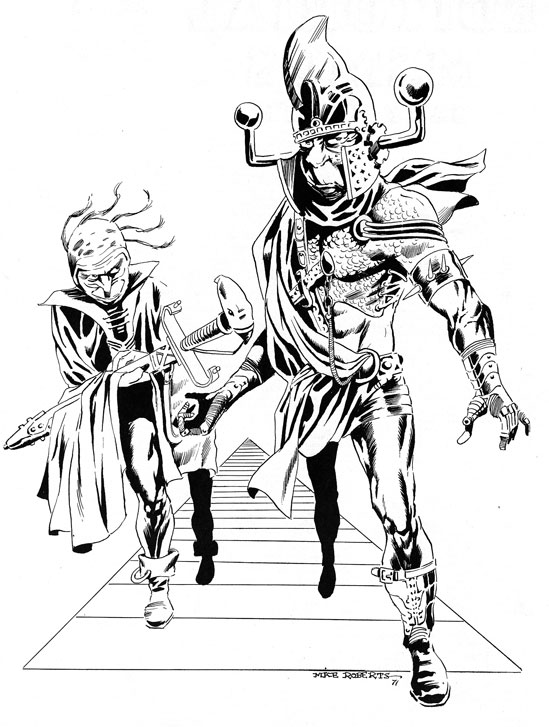
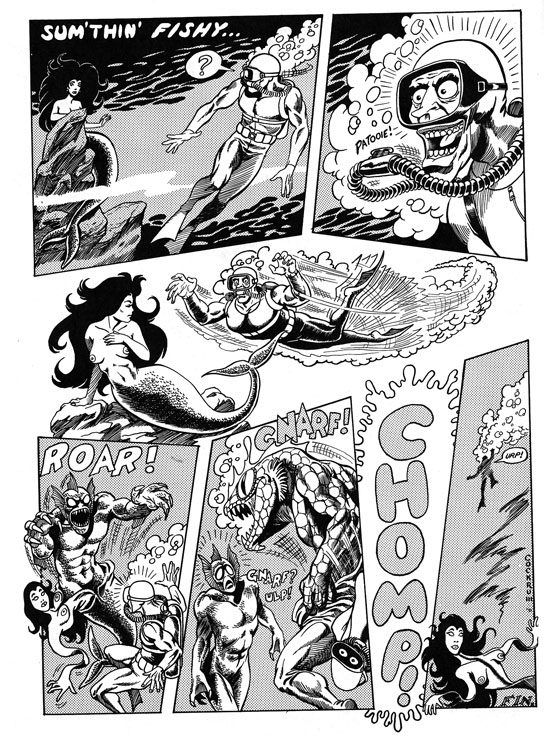 I will let that Dave Cockrum one-page strip above be the last we see of this great zine. It must have been a blast to produce, and Groth agrees, saying, “How could it not be great? I was learning by leaps and bounds how to put a print periodical together, fine-tuning what little skill I had. I was 17, in my last year of high school (which is always a breeze — just showing up more or less guarantees graduation), I had a network of like-minded pals all over the country, and I was able to talk to and work with older professionals that I admired and looked up to. I still stay in touch with a number of people I see here. Ken Smith is one of my close friends; I see John Fantucchio whenever I get back East; I’ve been in touch recently with Jeff Wasserman, who hasn’t changed a bit, and it felt like old times. Really old times.”
I will let that Dave Cockrum one-page strip above be the last we see of this great zine. It must have been a blast to produce, and Groth agrees, saying, “How could it not be great? I was learning by leaps and bounds how to put a print periodical together, fine-tuning what little skill I had. I was 17, in my last year of high school (which is always a breeze — just showing up more or less guarantees graduation), I had a network of like-minded pals all over the country, and I was able to talk to and work with older professionals that I admired and looked up to. I still stay in touch with a number of people I see here. Ken Smith is one of my close friends; I see John Fantucchio whenever I get back East; I’ve been in touch recently with Jeff Wasserman, who hasn’t changed a bit, and it felt like old times. Really old times.”
There is much more to see and read, so please go download the zine (in two parts) here . Thanks for dropping by, and if you did, please leave a comment below! My gratitude this time goes out to Gary Groth for answering questions via email. And although I did not have time to insert comments from him, Robert Kline, as well. I did have a great afternoon interviewing him, so keep your eyes peeled for a Robert Kline special soon!
Ken Meyer Jr
kenmeyerjr@yahoo.com


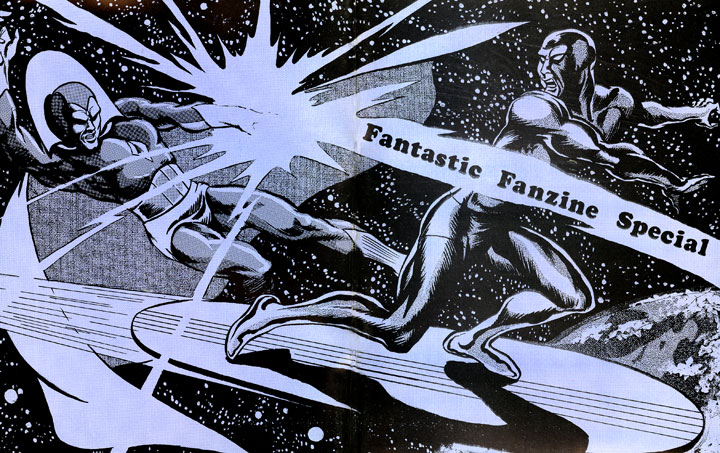
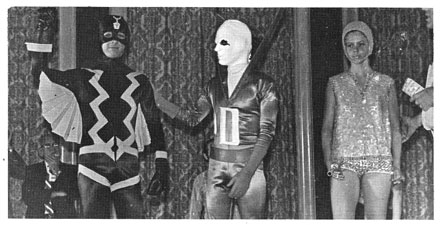

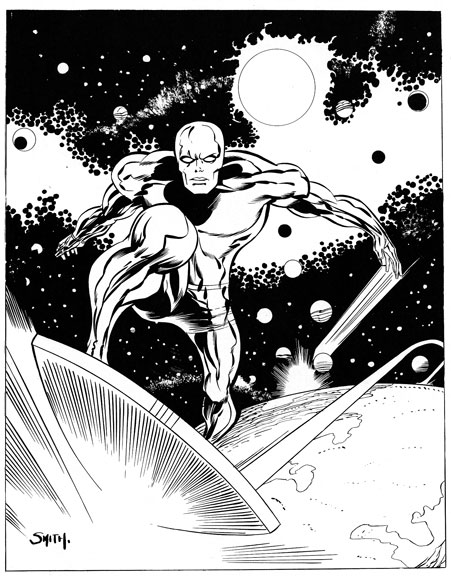
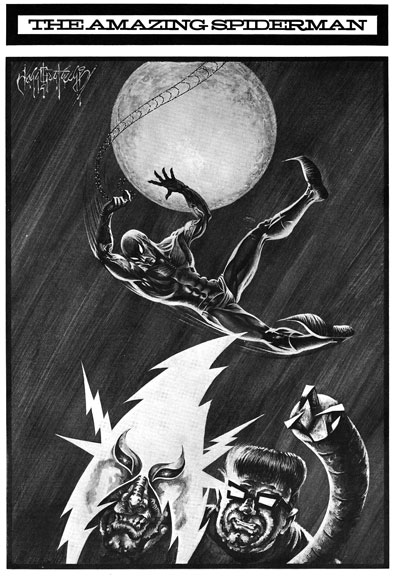
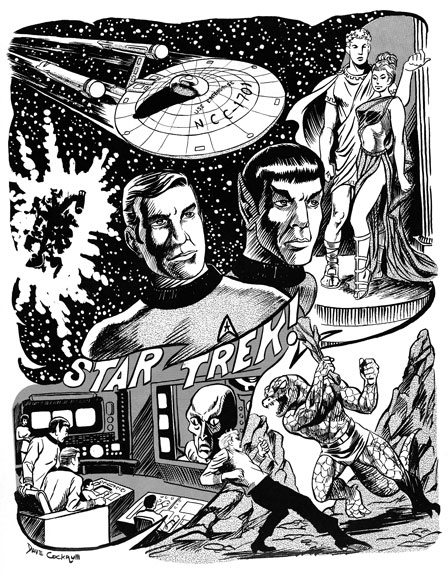

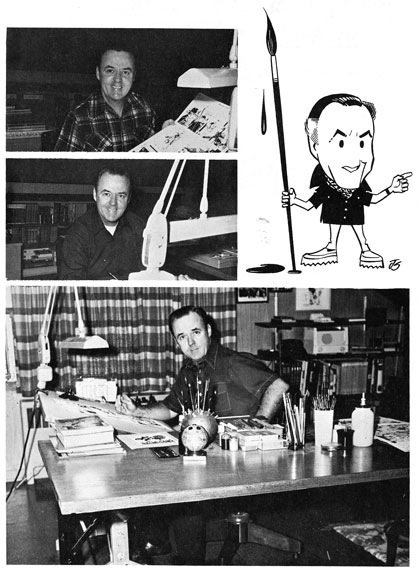
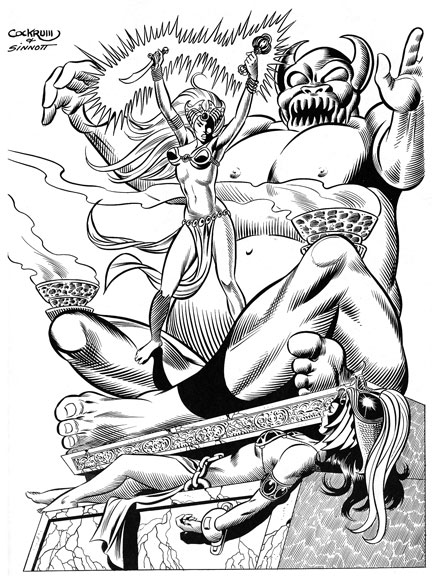
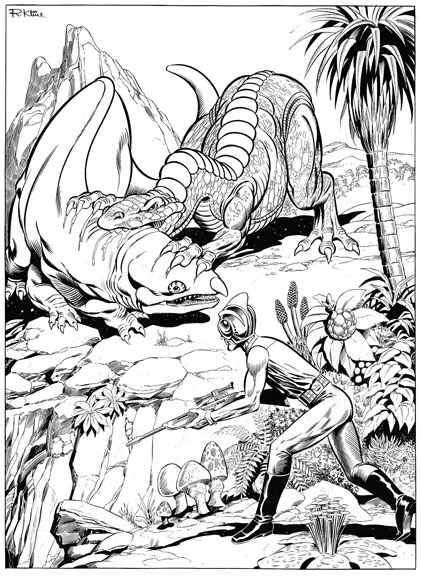
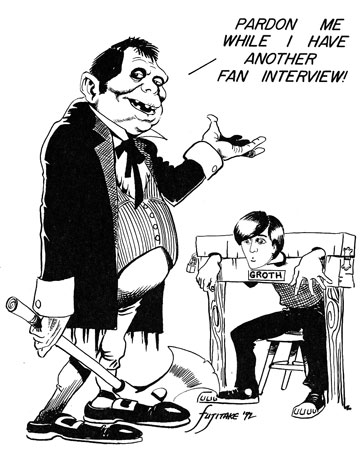
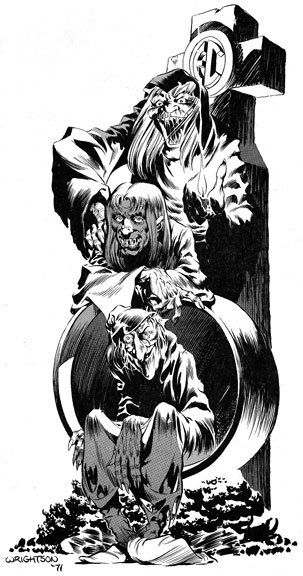
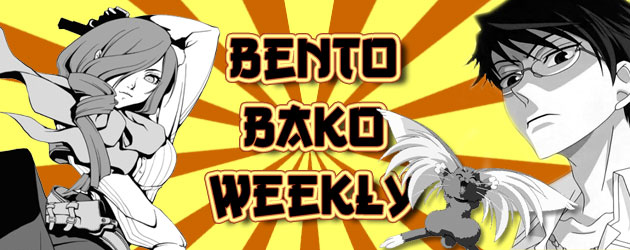

Great column, Ken. I have one minor complaint — you’ve misidentified Denny O’Neil as Len Wein. The third picture in the third row from the “Don’t Kick…” group of pictures has O’Neil (not Wein), Roy Thomas, and Gil Kane,
Thanks for pointing that out and leaving a comment, Ben!
I found your revelation about Gary Groth/Tony Isabella/Steranko to be quite interesting, and not at all unexpected, at least on Steranko’s part. I attended a Steranko signing at a Con in NYC in the mid-2000’s where I was told by his publisher “Do not mention anything about the Marvel Shield Trade Paperback.” — I believe he had been negotiating for royalties that Marvel ultimately didn’t pay. Of course, a fan right in front of me foolishly started a conversation with Steranko about the Shield controversy … resulting in a 3 Stooges-like “Slowly I Turn” tantrum which ended up shutting down the line I had been waiting in for 1/2 hour. Makes me wonder what Isabella had done to deserve Steranko’s wrath way back when.
On another note, hope your hernia operation went ok.
Aaron
Hey Aaron, thanks for leaving a comment…and yes, I still need to scan those zines you so graciously loaned me! And yeah, recovering nicely, thanks!
Mike Zeck as Black Bolt? Wow!
Re: Dennis Fujutake. His very early work showed a strong Ditko influence, then a strong Jeff Jones influence. But as he sharpened his artistic skills, his work eventually transformed into his own unique style. His transformation reminded me a bit of Barry Smith’s, whose earliest work was very Kirby-esque, but changed dramatically once he got into his artistic groove.
Russ, thanks for coming by. I agree about Dennis…I did love his Jones phase, to be honest. And you can see more (and color) photos of Zeck in his BB costume on his facebook page!
hey thanks for the column. i always read it (and download the issue) because it is a very interesting insight on that kind of stuf, which generally is never searched. Thanks!!!!